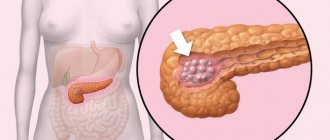The World Health Organization estimates that approximately one in three adults in the world is overweight, and one in ten is obese. Unfortunately, it is generally accepted that weight gain with age (especially in the abdominal area) is a normal process associated with aging. They say that after 30 years, metabolism slows down, and the body begins to store more fat.
Like 1
3850
Consequences of obesity
Excess weight is not only an aesthetic problem. Obesity causes complex harm to the health of the body. Excessive body fat affects the development of cardiovascular disease, type 2 diabetes, musculoskeletal damage (such as osteoarthritis), and even some cancers (endometrial, breast, and colon cancer).
- 171
More details - 180
More details
- 234
More details
- 315 234
More details
Ultimately, obesity is almost always associated with hormonal changes - it becomes much more difficult for the body to maintain normal levels of testosterone, insulin, cortisol, leptin and other hormones. The reason is that as excess weight increases, fat cells begin to play an increasingly active role in human metabolism, disrupting metabolism.
What causes obesity?
In many ways, obesity is a mysterious disease. Experts don't know exactly how your body regulates your weight and body fat. What they do know is that a person who eats more calories than he or she uses for energy each day will gain weight. (this is called the law of conservation of energy)
But the risk factors that determine obesity can be complex. They are usually a combination of your genes, socioeconomic factors, metabolism and lifestyle. Some endocrine disorders, diseases, and medications can also affect a person's weight.
Thyroid and obesity
In some cases, obesity can actually be triggered by hormonal problems that a person already has. Low levels of thyroid hormones (hypothyroidism) are characterized by serious metabolic disorders - excess weight gain, chronic fatigue, headaches, insomnia and inability to get enough sleep even with plenty of sleep.
One of the most common causes of decreased thyroid hormones and concomitant obesity is a simple lack of iodine in the daily diet, which can be corrected in the simplest ways. If you are gaining excess weight, even after following a careful diet and exercising regularly, be sure to check whether you have enough sources of iodine in your diet.
The role of genetics in the development of obesity
Up to 70% of obesity cases are associated with genetics. The development of the disease is influenced by changes in more than fifty genes.
For example, obesity may be associated with melanocortin receptor deficiency. The deficiency occurs due to disruptions in the MC4R gene. This is the type 4 melanocortin receptor gene. The MC4R gene is involved in the regulation of eating behavior, suppresses appetite and affects metabolism and body weight.
Up to 6% of people with severe childhood obesity have mutations in the MC4R gene.
Melanocortin is a hormone that is responsible for the feeling of fullness. If the functioning of the MC4R gene is disrupted, it is difficult for a person to understand when he is full. As a result, he often overeats and therefore gains weight. As a rule, in this case, obesity develops from childhood. Children with this variant of this gene have an increased appetite and are often taller and larger than their peers.
Also, mutations in the FTO (fat mass and obesity associated) gene may be to blame for the formation of obesity. One of its modified variants is found in almost 50% of the world's population. It is also responsible for the difficulty in picking up satiety signals from the digestive system.
In addition, people with an altered FTO gene are prone to compulsive overeating. In this case, a person eats a lot and cannot stop, although he is already full. There are also mutations in the leptin receptor gene LEPR, which provoke obesity and insulin resistance.
But most often it is impossible to identify one single genetic cause that is responsible for the development of obesity. It is usually a combination of genetic and environmental factors.
It is known that even if a person has a genetic predisposition to increased weight gain, weight can still be controlled.
Obesity and overeating
By consuming more energy from food than the body needs for daily activity, you provoke the deposition of unclaimed calories into fat depots - this is how obesity develops. Remember that an extra couple of candies a day (200-300 kcal) will provide a weight gain of 8-10 kg of fat over the course of a year. If you want to lose weight, try to give up sweets as much as possible.
It is also necessary to take into account the fact that playing sports not only speeds up metabolism and metabolism, but also increases appetite. Trying to lose weight solely through regular workouts and fat-burning cardio, but not paying enough attention to your diet, you may even gain weight by increasing your appetite. Swimming especially increases your appetite.
General principles of rational nutrition (outside of pregnancy)
Reducing the calorie content of food (calculated by subtracting 20% from the daily calorie intake for a particular person), the minimum daily calorie intake for women is 1200 kcal per day;
Correct distribution of calories during the day: the main amount should be in the first half of the day, for dinner - only 15-20% of the total calories per day;
A balanced diet based on the content of the main energy-intensive macronutrients (carbohydrates - 55-60%, proteins - 20% and fats - 20-25%, including unsaturated fats should account for 2/3 of all fats);
The basis of a balanced diet should be slowly digestible carbohydrates (polysaccharides): digestible (cereals, legumes, vegetables, fruits, liquid dairy products) and indigestible (dietary fiber - helps fill the stomach due to swelling and creates a feeling of satiety, slows down its emptying, improves intestinal function, contribute to the normalization of stool);
A healthy diet involves consuming a sufficient amount of dietary fiber (25-30g/day) in foods of plant origin that contain little fat and many vitamins and microelements;
The number of calories allocated for proteins should be replenished by eating fish at least 3 times a week, red meat - no more than 3 times a week;
When approaching the choice of fatty component of food, preference should be given to polyunsaturated fatty acids (from oils of vegetable origin - flaxseed, sunflower, corn, cottonseed, soybean) - Omega-6 and Omega-3 in a ratio of 10: 1 in the diet (considered essential and should must be taken with food), which has a positive effect on reducing the risk of cardiovascular diseases;
The number of calories allocated to fats should be replenished with monounsaturated fatty acids (olive, rapeseed, peanut, rice);
The share of saturated fatty acids (cocoa bean butter, lamb, beef, pork, chicken fats; butter and palm oil) should account for no more than 10% of all fats, because promote weight gain and the development of abdominal obesity; increase the level of atherogenic lipids in the blood (cholesterol, low-density lipoproteins);
Maintaining a balanced diet requires adequate fluid intake - at least 1 ml of water per 1 kcal of diet;
Salt intake no more than 6 g per day (upper safe limit);
Phytocompounds included in products of plant origin have a positive effect on reducing the risk of cardiovascular diseases (flavonoids in grape juice; quarcetin in yellow and red onions, broccoli, red grapes, apples, cereals);
Green and white teas (contain bioflavonoids, polyphenols and catechins) promote weight loss;
To curb appetite and uncontrolled/unmotivated eating, you can drink water in small sips and wait at least 20 minutes, or perhaps eat low-calorie foods and chew them very slowly, or eat several (2-3) walnuts before your main meal;
Preference should be given to cooking methods that do not require the addition of fat - boiling, steaming, stewing, grilling, barbecuing.
Physical activity is one of the main components of lifestyle changes along with a commitment to a balanced diet. It is recommended to gradually increase physical activity from 30 to 60 minutes 3 times a week (at the rate of 1000 kcal per week) at the stage of weight loss and its expansion at the stage of maintaining the achieved body weight.
Carbohydrates: the main cause of weight gain
Among other things, it is a mistake to consider fast carbohydrates solely as empty calories. Metabolism is designed in such a way that excess sugar calories are literally converted into fat and utilized by the body in fat depots as quickly as possible. If, along with an excess of carbohydrates, there is also an excess of fat in the diet, this can increase the level of cholesterol in the blood.
To combat obesity, it is important not only to carefully study the information on the glycemic index and the rate of absorption of carbohydrates, but also to limit the consumption of pure sugar as much as possible, giving up not only chocolate and sweets, but also fruit juices (including freshly squeezed) and even sweetened yoghurts. All these foods only provoke you to overeat.
Dental clinic No. 2
Excess weight provokes serious diseases. Obesity is an increase in body weight, in which excess fat accumulates under the skin - on the abdomen, chest, back, hips, buttocks. The danger is that fat is deposited not only under the skin, but also on internal organs: the heart, blood vessels, liver... The result is a predisposition to diabetes, hypertension, coronary heart failure, fatty liver, arthritis, and other diseases.
The cardiovascular system is the first to suffer from obesity: dystrophic changes in the myocardium, atherosclerosis (vascular damage), hypertension (increased blood pressure)... The heart becomes covered with a layer of fat, the size of the heart increases (1.5-2 times larger than normal).
Due to disorders in the cardiovascular system, obese patients experience shortness of breath even with little physical activity, decreased performance, increased blood pressure, and often experience short-term pain in the heart area. These changes are reversible and decrease with weight loss.
The circulatory system is affected. There may be an increase in blood clotting, which leads to the formation of blood clots and disruption of the blood supply to organs. Increased fat content in the blood contributes to the development of atherosclerosis. Cholesterol levels increase, especially with age.
Obesity impairs the functioning of the respiratory system. Excess fat in the abdominal cavity raises the diaphragm, preventing its movement. Lung capacity is significantly reduced as a result of changes in the boundaries and compression of the lungs, metabolic processes in the lung tissue are disrupted, and breathing becomes difficult.
Due to lung obesity, gas exchange is disrupted and ventilation is weakened. This leads to insufficient blood supply to the lung tissue and damage to areas of the lungs by microorganisms. People suffering from obesity often and severely suffer from colds (acute respiratory infections, flu, bronchitis, pneumonia...), other respiratory diseases, and drug treatment is ineffective.
Significant excess weight can lead to curvature of the spine due to a shift in the body's center of gravity.
Excessive nutrition causes overload of the gastrointestinal tract, changes in its anatomy: an increase in the size of the small intestine and its weight (by 20-40%). At first this leads to improved digestion, then, on the contrary, to worsening. More than 60% of obese people develop chronic gastritis, and other gastrointestinal diseases are also common.
In obesity, liver damage and excessive accumulation of fat in the liver (fatty liver) are common. There are frequent cases of cholelithiasis, inflammation of the gallbladder and bile ducts, and the formation of stones.
Obesity impairs the body's sensitivity to insulin and causes disturbances in carbohydrate metabolism, which leads to the development of diabetes mellitus. In obese people, with weight loss, the course of diabetes mellitus becomes more benign.
Often, obese people have poor functioning sex glands. In women, the menstrual cycle is disrupted, and even with a regular cycle, conception often does not occur. More than half of obese women suffer from infertility. Men experience impotence even at a young age.
The amount of water in the body of obese patients is usually significantly higher than normal. Disorders of water metabolism directly depend on the degree of obesity and the duration of the disease.
Metabolic disorders (protein, fat, carbohydrate, salt) lead to disorders in the musculoskeletal system, salt deposition, pain in the joints, upper and lower extremities, and spine.
So, with obesity, almost all organs and systems of the body suffer.
Many ways have been invented to determine optimal and excess weight. If your weight differs from the “ideal” weight calculated using these formulas by 5-10% in one direction or another, this is most likely normal and due to the individual characteristics of the body, you do not need to artificially reduce weight: this can cause much more harm to health than “ extra" couple of kilograms. You can talk about obesity as a disease if your weight is significantly increased.
Age-related hormonal changes
It is widely known that women aged 45-50 years begin menopause, characterized by changes in metabolism, sleep disturbances and even depression. However, few people know that similar age-related processes also apply to men, who, after 40-45 years, also begin andropause, leading to a gradual decrease in testosterone levels.
In turn, a decrease in testosterone levels leads not only to loss of muscle mass, but also provokes “female type” obesity, characterized by increased deposition of fat reserves on the hips and lower abdomen. It is also important that bad habits (primarily smoking and excessive alcohol consumption) bring the onset of this andropause closer.
Bodies under siege
In effective therapy of any disease, the main thing is a clear definition of its goals. For obese patients, it is important to achieve not an ideal body weight (BMI <25) and a beautiful figure, but an optimal weight, when symptoms or the risk of developing concomitant diseases are significantly reduced.
The first symptoms of obesity-related diseases usually appear before the age of 40, developing into a certain picture by the age of 50. The most life-threatening is cardiovascular pathology: with a BMI > 30 kg/m2, even in the absence of other risk factors, the incidence of stroke and heart attack doubles.
Arterial hypertension is significantly associated with obesity, especially abdominal obesity. Data from numerous studies show that among obese people this pathology occurs almost three times more often than in thin people. In general, the presence of abdominal obesity, which is characterized by elevated cholesterol levels, is the most unfavorable prognostic factor. This combination, together with arterial hypertension and insulin resistance (currently supplemented by a number of symptoms), is called metabolic syndrome. Each of these symptoms in itself is a risk factor for stroke and heart attack, and their combination, of course, accelerates the development and progression of atherosclerosis, coronary heart disease and other cardiovascular diseases.
Another common pathology - diseases of the veins of the lower extremities - can develop with abdominal obesity due to increased intra-abdominal pressure. The pathology of the blood coagulation system accompanying metabolic syndrome, in turn, significantly increases the risk of not only arterial, but also venous thrombosis and thromboembolism.
A serious pathology that accompanies obesity is carbohydrate metabolism disorders, which have been mentioned more than once above. 80% of patients with diabetes mellitus are overweight: the risk of developing this disease with a BMI > 35 kg/m2 increases up to a hundred times.
Obesity is often associated with other, lesser known diseases. For example, with sleep apnea syndrome (stopping breathing during sleep) - a serious medical problem that can be fatal. Because excess weight places stress on the joints of the legs, a huge number of obese people suffer from early and severe osteoarthritis and gout, which significantly reduces their quality of life.
Reproductive dysfunction, an increased risk of certain cancers, diseases of the digestive tract, liver and pancreas, and finally, psychological problems that we can talk about endlessly - this is not a complete list of problems one way or another associated with excess weight.










